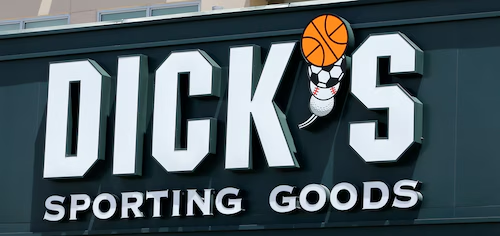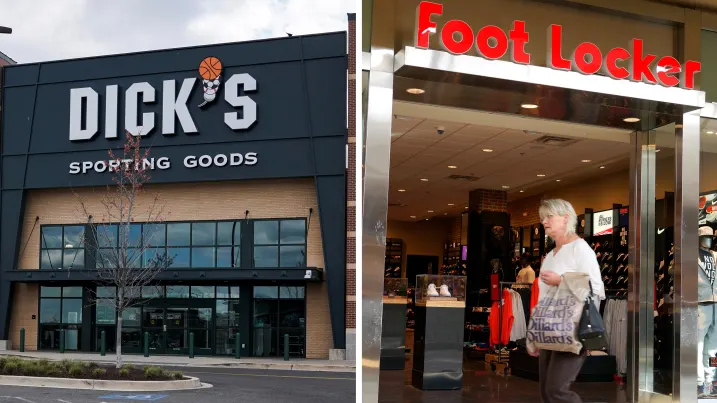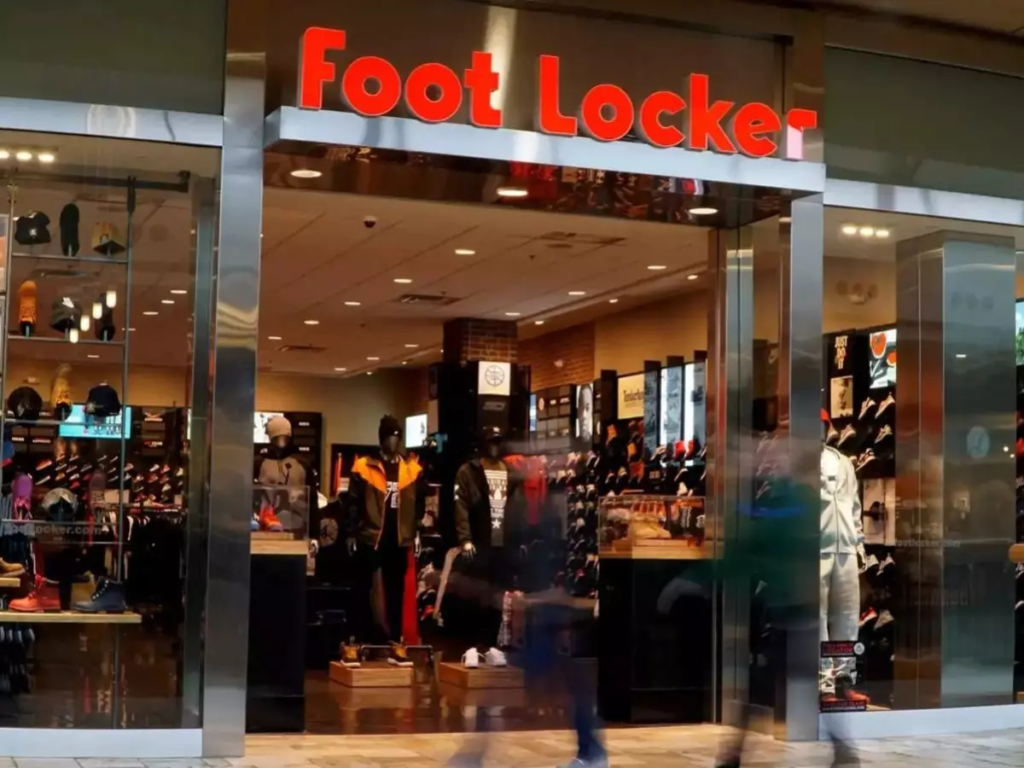In a move that’s got the sports retail world buzzing, Dick’s Sporting Goods recently announced a $2.4 billion deal to acquire Foot Locker, a major player in the athletic footwear scene. This blockbuster deal, paired with Dick’s solid performance in a tough retail environment, has sparked excitement, skepticism, and plenty of chatter among shoppers, investors, and industry insiders. Let’s dive into what this means for Dick’s, its customers, and the future of sports retail in the USA.

A Game-Changing Acquisition
On May 15, 2025, Dick’s Sporting Goods confirmed it’s buying Foot Locker for $2.4 billion, offering $24 per share—a hefty 66% premium over Foot Locker’s recent stock price. The deal, expected to close in the second half of 2025, will see Foot Locker operate as a standalone brand under Dick’s umbrella, keeping its iconic stores like Champs Sports, Kids Foot Locker, and atmos intact. With Foot Locker’s 2,400 stores across 20 countries and Dick’s 850-plus locations in the U.S., the combined company will boast a massive global footprint of over 3,200 stores and $21 billion in annual sales.
Why the big move? Dick’s Executive Chairman Ed Stack called Foot Locker a “culturally significant brand” with room for growth. By merging Foot Locker’s urban, sneaker-obsessed customer base with Dick’s suburban, athlete-focused shoppers, the company aims to create a powerhouse that caters to every corner of the sports retail market. Plus, Dick’s sees a chance to boost Foot Locker’s digital game and store experience, areas where the sneaker chain has struggled lately.
But not everyone’s cheering. Dick’s stock took a 14% hit after the announcement, closing at $179.95, as investors worried about the risks of integrating a struggling retailer. Foot Locker’s sales have been sliding, with a 2.6% drop in comparable sales in its latest quarter, and its mall-based stores have lost ground to competitors. Some analysts, like TD Cowen’s John Kernan, called the deal a “strategic mistake,” pointing to the high cost and potential challenges of turning Foot Locker around. Others, like Morningstar, are more optimistic, believing Dick’s expertise in footwear could breathe new life into Foot Locker’s brand.

Why Foot Locker?
Foot Locker’s been a staple of sneaker culture for decades, known for its “Stripers” (those iconic striped-shirt employees) and exclusive sneaker drops that draw lines around the block. But recent years have been rough. The chain’s mall-heavy locations and declining sales have left it vulnerable, with shares dropping 40% this year before the deal was announced. Dick’s, on the other hand, has been thriving, posting a 4.5% comparable sales growth and $3.37 in adjusted earnings per share in its first quarter, beating expectations.
By snapping up Foot Locker, Dick’s gets instant access to a broader audience, especially younger, urban shoppers who live for the latest sneaker trends. It also strengthens ties with major suppliers like Nike, which accounts for 25% of Dick’s inventory and a whopping 59% of Foot Locker’s. Analysts at Jefferies noted this could be a big win for Nike, boosting its retail presence through a combined entity that could generate $8 billion in Nike sales alone. Plus, with talk of new U.S. tariffs on imports like footwear, Dick’s is betting this deal will help it navigate choppy economic waters by diversifying its reach.
Dick’s: A Retail Success Story
Even without the Foot Locker deal, Dick’s Sporting Goods has been a standout in the retail world. Founded in 1948 in New York as Dick’s Clothing and Sporting Goods, the company has grown from a small shop to a retail giant based in Coraopolis, Pennsylvania. With over 850 stores, including brands like Golf Galaxy and Public Lands, Dick’s has built a reputation for quality gear, from soccer cleats to yoga mats, and a shopping experience that blends in-store expertise with a strong online presence.
The company’s financials tell a story of resilience. Despite a tough retail climate, Dick’s reported $13.4 billion in annual revenue and a robust $1.87 billion in EBITDA. Its stock, trading at a forward P/E of 12.4X (compared to the industry’s 13.5X), has earned a Zacks Value Style Score of A, making it a darling for value investors. Dick’s has also kept shareholders happy with 15 years of consistent dividends and a 650% stock rise over time, as noted in posts on X.
Dick’s isn’t just resting on its laurels. Its “House of Sport” and “Next Gen” stores offer immersive experiences, like indoor turf fields and golf simulators, that make shopping feel like a day at the gym. These innovations have helped Dick’s steal market share from competitors, even as retail faces headwinds like inflation and shifting consumer habits.

Risks and Rewards
The Foot Locker acquisition isn’t without its hurdles. Analysts like Citi and Telsey Advisory Group lowered their price targets on Dick’s to $200 and $220, respectively, citing “execution risks” and the high premium paid for a struggling brand. Foot Locker’s mall-based stores face stiff competition from direct-to-consumer brands and nimble online sneaker marketplaces. Plus, Dick’s is taking on new debt to finance the deal, which could strain its balance sheet if the integration falters.
Skeptics also point to Foot Locker’s leadership. CEO Mary Dillon is widely respected, and some wonder if Dick’s can do better than her team at reviving the brand. TD Cowen warned that the deal could overexpose Dick’s to Nike, with the combined company relying on the Swoosh for 38% of its inventory, a risky bet if streetwear trends shift.
Still, there’s plenty of upside. Dick’s expects $100-$125 million in cost synergies, and the deal could boost earnings after the first full year. UBS and others remain bullish, with price targets as high as $260, citing Dick’s track record of smart growth. By blending Foot Locker’s sneaker cred with Dick’s operational know-how, the company could create a global sports retail leader that appeals to everyone from weekend warriors to sneakerheads.
What’s Next for Shoppers?
For sports fans and sneaker enthusiasts, this deal could mean exciting changes. Dick’s plans to enhance Foot Locker’s stores with better designs and omnichannel experiences, like seamless online-to-store shopping. Imagine walking into a Foot Locker with the same high-energy vibe as Dick’s House of Sport, complete with expert staff and exclusive drops. The deal also signals Dick’s ambition to go global, potentially bringing its winning formula to new markets.
But shoppers might face short-term hiccups. Store closures or rebrands could disrupt the Foot Locker experience, and any missteps in merging the two companies could affect product availability or pricing. With tariffs looming, both retailers will need to stay nimble to keep costs down for customers.
The Bigger Picture
Dick’s Sporting Goods is playing a bold hand, betting that combining its strengths with Foot Locker’s legacy will create a retail giant that can weather economic storms and changing trends. Whether it’s a slam dunk or a risky shot depends on execution, but one thing’s clear: Dick’s isn’t content to stay on the sidelines. For now, sports fans and investors alike will be watching closely to see how this game unfolds.
Also read :- Miley Cyrus Shines in 2025: New Music, Family Ties, and Bold Fashion Moves






